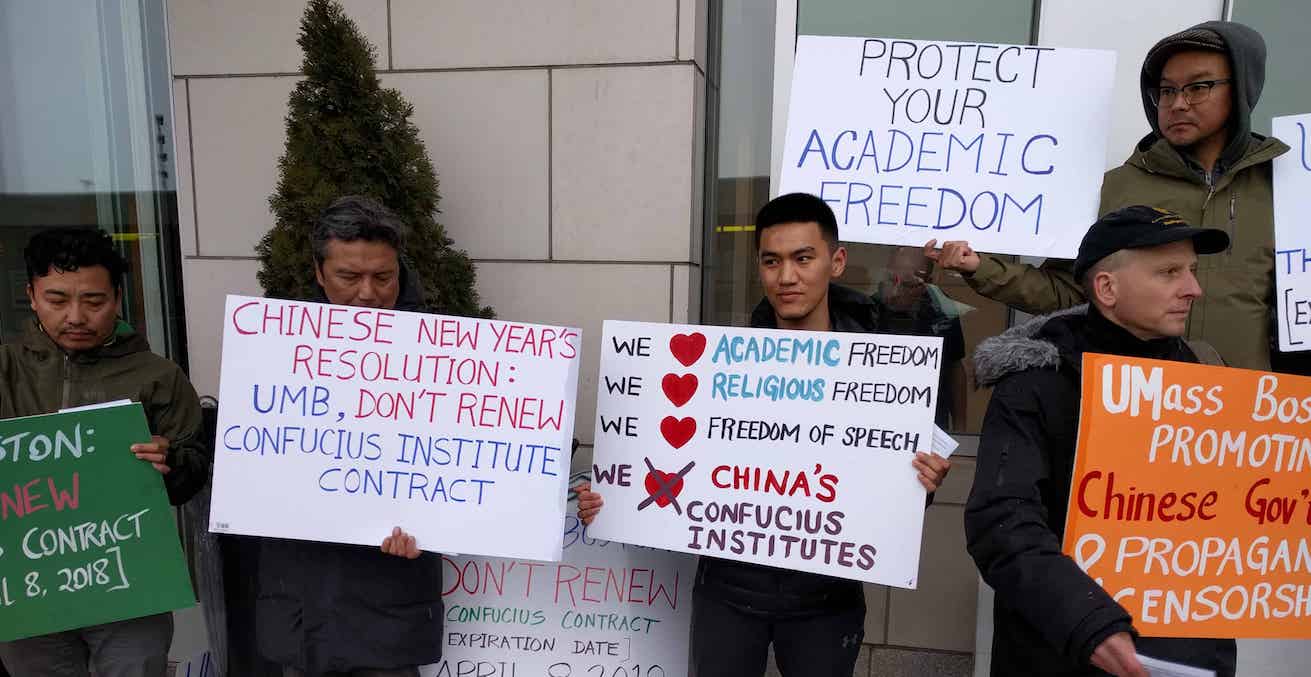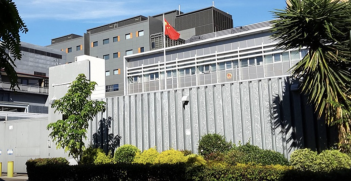Innocent as Strawberries: Confucius Institutes and Chinese Influence

Confucius Institutes are again proving controversial both in Australia and abroad. But are they really any different to their Western equivalents such as Alliance Française, Dante Alighieri Society or the British Council?
Language and culture promotion organisations are one form of cultural diplomacy that countries use to build and spread their soft power. European countries were the first to create such organisations, the earliest ones being the Alliance Française, established in 1883, and the Dante Alighieri Society, set up six years later in 1889. China joined the group of nations with a language and culture promotion organisation roughly a century later when, in 1987, it set up the Office of Chinese Language Council International, commonly known as Hanban.
Hanban’s signature initiative is the network of Chinese language and culture centres known as Confucius Institutes (CIs). These are usually established as partnerships between a Chinese university, a foreign university and Hanban, and conduct Chinese language and cultural education activities including courses and public events, as well as supplying teaching staff and materials. Mirroring CIs are Confucius Classrooms (CCs), which operate in primary and secondary schools. By the end of last year, there were 525 CIs and 1113 CCs across 146 countries and regions.
Academic Michael Barr says CIs are “possibly the most controversial example of Chinese soft power”. This is an apt description as they have been criticised on the grounds they are connected to the Chinese government, promote pro-Chinese views and restrict debate on China since shortly after the first CI opened in 2004.
Another wave of controversy has emerged in recent months. US Senator for Florida Marco Rubio called for universities in the state to close their CIs and proposed changes to the Higher Education Act that would make universities with CIs ineligible for some federal funding. Another proposal before the House of Representatives would require CIs to register as foreign agents. During a Senate Intelligence Committee Hearing in February, FBI Director Christopher Wray said his agency had concerns about CIs and had been monitoring them for some time.
In Australia, former Head of Strategic Analysis in the Office of National Assessments Ross Babbage said the presence of a CI in the NSW Department of Education—so far a unique arrangement among CIs—was “unacceptable” because of the potential for Chinese influence over a government department. Academic John Fitzgerald similarly urged universities to reconsider their involvement with CIs; Clive Hamilton’s book Silent Invasion is highly critical of their activities.
Are CIs really a sinister means of furthering Chinese influence?
It’s true that Hanban is directly under the Ministry of Education and has representatives from 12 ministries and commissions. The chair of its board of directors, Liu Yandong, is a vice premier and member of the Politburo and its director general, Xu Lin, is a member of the State Council.
A government connection, however, is not unusual for language and culture promotion organisations. The management body of the Cervantes Institute consists of the king and president of Spain and representatives from the Ministry of Foreign Affairs and Cooperation, Ministry of Education, Culture and Sport, Ministry of Home Affairs and the Treasury. The Alliance Française is linked to the Ministry of Education, Ministry of Foreign Affairs and Ministry of Culture, and each overseas centre works with the local French Embassy. The Japan Foundation is supervised by the Cultural Division of the Ministry of Foreign Affairs, and its president is appointed by the foreign minister.
However, China’s language and culture promotion activities are perceived differently because its government is communist. Critics argue this means CIs are best thought of as tools of sharp power, which Christopher Walker and Jessica Ludwig define as efforts to “pierce, penetrate, or perforate the political and information environments in the targeted countries”, because they are designed to push China’s views and silence criticism. John Fitzgerald, for example, argues that CIs “curate the information they offer about the history, culture and politics of China to suit the Chinese government’s demands”, including through teaching materials and curriculums.
A CI director has described the teaching materials provided by Hanban as being “as innocent as strawberries” and added, “they look like the language teaching material for any other language you might want to pick up from a democratic parliamentary state”. Language textbooks by and large present a very bland, even anodyne, view of the countries associated with the language, free of any controversy or complexity. Chinese textbooks follow the norm rather than constitute an exception.
The National Association of Scholars (NAS) report on CIs in the US cites concerns materials supplied by Hanban embody Chinese perspectives, and are sometimes partial. Students studying Chinese should learn about the Chinese view on contemporary and historical events and issues. After all, the point of learning another language is to understand the ways of thinking and seeing the world of the people who speak that language, and to understand their culture, society and polity.
This doesn’t imply unquestioning acceptance any more than learning English implies agreement with Australian or American views. Indeed, the lack of significant changes in perceptions of and policies towards China, together with pushback against it, show the promotion of Chinese language and culture through CIs and CCs hasn’t made foreign publics and governments more pro-China.
Valuing freedom of expression also means the Chinese view can be heard. One can’t argue all views and opinions should be allowed, except the Chinese one.
CI staff often point out CIs are controlled by their host universities and make valuable contributions to Chinese language and culture education, and have done so in response to the latest criticisms.
To be sure, there are practical and organisational issues which need to be addressed. The NAS report’s suggestions for reforms to contractual arrangements, hiring practices and accessibility of such information—and Fitzgerald’s suggestions for changes to funding arrangements—are worthy of consideration.
Greater transparency would help CIs and CCs gain full acceptance as legitimate vehicles for the promotion of Chinese language and culture in an atmosphere of growing concern over Chinese influence.
Dr Jeffrey Gil is a senior lecturer in the College of Humanities, Arts and Social Sciences, Flinders University. He is the author of Soft Power and the Worldwide Promotion of Chinese Language Learning: The Confucius Institute Project, published by Multilingual Matters.
This article is published under a Creative Commons Licence and may be republished with attribution.





